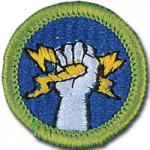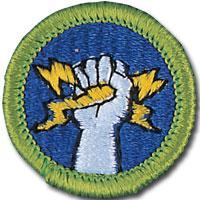
Circuits and electronics appeal to kids in ways that I never could have imagined. The very first time I set up a science booth at an educational convention, I put out several “electric boards” I had made, which had all kinds of motors, lights, buzzers, and gadgets that I had ripped off old toys and electronics just waiting to be hooked up. Kids rushed into the booth, eagerly snapping wires onto all the different components, making lights turn on, buzzers sound, motors whir, and more. Can you imagine how busy (and noisy) my booth was? Those boards never got a break the entire weekend the convention was held, and neither did the minds of those kids.
It’s interesting how these types of experiments are not usually taught in the classroom (at least, in the typical classroom setting). Unfortunately, since electricity is not well understood by most teachers, and the materials are usually expensive, it’s a subject that just glossed over, if not skipped entirely. Yet this is a vital area of science that so many other fields are based on. Kids that work through the projects and activities here are going to have a working understanding of electricity, magnetism, fields, forces, and more, which is a huge advantage when they hit the upper grades and college years. The activities and experiments on this page teach the big ideas behind Maxwell’s Principles. Students will discover how to detect magnetic poles and magnetic fields, learn about electromagnetism as they construct motors, generators, doorbells and earphones, and uncover the mysterious link between electricity and magnetism that marks one of the biggest discoveries of all science…ever.
Please login or register to read the rest of this content.

